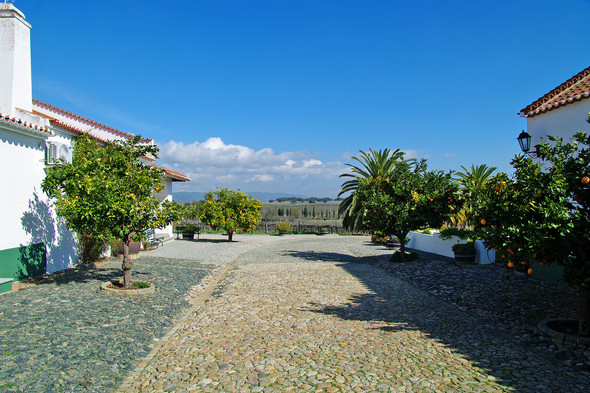Cortes de Cima, a white farmhouse, sitting atop a small hill in sunny Alentejo, has been home to the Danish ‘winegrower’, as he jokingly calls himself, Hans Jorgensen, and his Californian wife, Carrie, since 1988, when they planted their first vines; in this case, Aragonez.
Dan seems to be a bit of a maverick, eschewing the VPQRD that he could use in favour of the looser ‘Regional Alentejano’, giving him greater freedom to plant the grape varieties he wishes and to use a raised trellis canopy system, meaning the grapes are further from the hot soil and can benefit from the cool night air; this also makes life easier for the vineyard workers. In addition, Dan was the first in the region to grow Syrah, despite having planting permission rejected by the authorities. He decided to go ahead anyway, thus planting ‘illegally’, and was rather pleased with the results. Indeed, Syrah has since been ‘legalised’ and many other growers have followed suit. The legacy of this still lives on in ‘Incognito’, a 100% Syrah only produced in exceptional years.
The experimental winery aims to combine empiric knowledge from the older generations and to add new knowledge and science to improve the blend. Their goal is to produce small quantities of top quality wine from predominantly local grapes, but also some international varieties, such as, of course, Syrah, Cabernet Sauvignon, Petit Verdot, Viognier and Sauvignon Blanc. They have certainly achieved this with the Syrah, their Homenagam a Hans Christian Andersen 2011 winning gold for the third year in a row at the Syrah du Monde 2015.
They leave nothing to chance when deciding when to pick either, harvesting a small quantity of grapes, leaving them to ferment for 3-4 days in order to see the result, before picking the rest.
In addition to experimenting with different varieties in the vineyard, they are also trying out different approaches for vinification, such as clay amphorae for maceration and fermentation. The Romans used ‘talhas’ for winemaking and this practice is still in used today in the region. The clay pots are tall, made from raw clay, with an open mouth, giving increased exposure to O2. The shape encourages movement of O2 while fermenting, giving perfect natural extraction, while loss of water through the walls of the pots concentrates the wine and changes its characteristics.
They produce a range of varietal wines, including Trincadeira, Aragonez, Touriga Nacional, as well as various blends. The reds are full-bodied and gutsy, the whites fresh and fruity, thanks to the plentiful Alentejan sunshine captured in the vineyard and the impeccable attention to detail in the winery. Trying the Syrah is, of course, a must.






